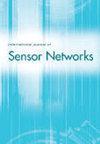利用软件定义网络解决5G网络中的垂直切换管理
IF 1.1
4区 计算机科学
Q4 COMPUTER SCIENCE, INFORMATION SYSTEMS
引用次数: 0
摘要
与4G网络相比,第五代(5G)网络提供平滑的数据传输、低延迟、高基站容量、更高的服务质量(QoS)和更宽的多输入多输出(MIMO)通道。然而,由于覆盖范围有限,用户网络接入变化频繁,导致无效切换率高,降低了服务质量,浪费了网络资源。本文开发了一种结合IEEE 802.21和软件定义网络(SDN)的创新垂直切换机制。该机制利用SDN的集中控制和可编程性,以及IEEE 802.21的标准化信息交换。这种组合可以实现明智的决策,减少无意义的垂直移交并提高网络性能。目标是保持有效的资源利用,保证QoS要求,减少新呼叫阻塞和切换呼叫丢失概率。仿真结果证实,与以前的算法相比,所提出的机制成功地降低了5G网络中所需的切换次数。本文章由计算机程序翻译,如有差异,请以英文原文为准。
Utilising software defined networking to address vertical handover management in 5G networks
Fifth-generation (5G) networks offer smooth data transmission, low latency, high base station capacity, improved quality of service (QoS), and wide multiple-input multiple-output (MIMO) channels compared to 4G networks. However, limited coverage and frequent changes in user network access cause high rates of ineffective handovers, reducing service quality and wasting network resources. This paper develops an innovative vertical handover mechanism that combines IEEE 802.21 and software-defined networking (SDN). This mechanism utilises centralised control and programmability from SDN, along with standardised information exchange from IEEE 802.21. This combination enables informed decision-making, reducing pointless vertical handovers and improving network performance. The goals are to maintain effective resource utilisation, guarantee QoS requirements, and reduce new call blocking and handover call dropping probability. Simulation results confirm that the proposed mechanism successfully lowers the number of handovers required in a 5G network compared to previous algorithms.
求助全文
通过发布文献求助,成功后即可免费获取论文全文。
去求助
来源期刊

International Journal of Sensor Networks
COMPUTER SCIENCE, INFORMATION SYSTEMS-TELECOMMUNICATIONS
CiteScore
2.40
自引率
27.30%
发文量
86
期刊介绍:
IJSNet proposes and fosters discussion on and dissemination of issues related to research and applications of distributed and wireless/wired sensor and actuator networks. Sensor networks is an interdisciplinary field including many fields such as wireless networks and communications, protocols, distributed algorithms, signal processing, embedded systems, and information management.
Topics covered include:
-Energy efficiency, energy efficient protocols-
Applications-
Location techniques, routing, medium access control-
Coverage, connectivity, longevity, scheduling, synchronisation-
Network resource management, network protocols, lightweight protocols-
Fault tolerance/diagnostics-
Foundations-
Data storage, query processing, system architectures, operating systems-
In-network processing and aggregation-
Learning of models from data-
Mobility-
Performance analysis-
Sensor tasking and control-
Security, privacy, data integrity-
Modelling of systems/physical environments, simulation tools/environments.
 求助内容:
求助内容: 应助结果提醒方式:
应助结果提醒方式:


